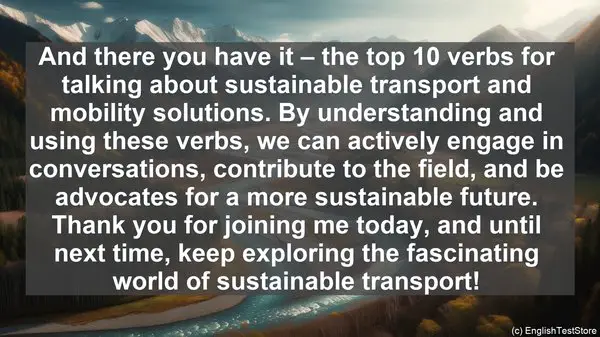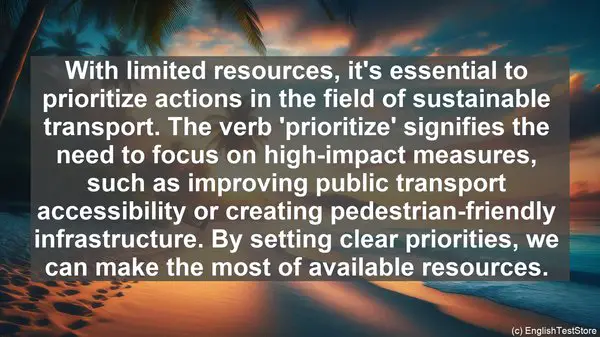Introduction
Today, we’re diving into the world of sustainable transport and mobility solutions. As we explore this fascinating field, it’s essential to familiarize ourselves with the verbs that are frequently used. These verbs not only help us express ideas but also provide insights into the various aspects of sustainable transport. So, let’s get started!

1. Reduce
One of the fundamental goals of sustainable transport is to reduce the overall carbon footprint. This can be achieved by using more fuel-efficient vehicles, promoting public transportation, and encouraging non-motorized modes of travel like cycling and walking. The verb ‘reduce’ encapsulates the idea of minimizing environmental impact.
2. Optimize
Efficiency is a crucial factor in sustainable transport. The verb ‘optimize’ comes into play when we talk about streamlining routes, improving traffic flow, and ensuring that resources are used in the most effective way. By optimizing transport systems, we can reduce congestion and save both time and energy.
3. Integrate
Sustainable transport is not just about individual modes of travel; it’s about creating a holistic system. The verb ‘integrate’ emphasizes the need to connect different modes, such as buses, trains, and bicycles, to provide seamless and convenient options for commuters. Integration also involves coordinating schedules and services for maximum efficiency.
4. Promote
To bring about a shift towards sustainable transport, active promotion is essential. The verb ‘promote’ signifies the efforts made to raise awareness, incentivize eco-friendly choices, and educate the public about the benefits of sustainable mobility. Promoting sustainable transport can involve campaigns, policy changes, and infrastructure development.
5. Innovate
The field of sustainable transport is constantly evolving, thanks to innovative solutions. The verb ‘innovate’ captures the spirit of creating new technologies, systems, and approaches that are more sustainable and efficient. From electric vehicles to smart traffic management, innovation plays a vital role in shaping the future of transport.

6. Collaborate
Addressing the challenges of sustainable transport requires collaboration among various stakeholders. The verb ‘collaborate’ highlights the importance of partnerships between governments, transport agencies, businesses, and communities. By working together, we can develop comprehensive and inclusive solutions.
7. Evaluate
Regular evaluation is crucial to ensure that sustainable transport initiatives are on the right track. The verb ‘evaluate’ encompasses activities like monitoring performance, collecting data, and analyzing the effectiveness of measures. Through evaluation, we can identify areas for improvement and make informed decisions.
8. Prioritize
With limited resources, it’s essential to prioritize actions in the field of sustainable transport. The verb ‘prioritize’ signifies the need to focus on high-impact measures, such as improving public transport accessibility or creating pedestrian-friendly infrastructure. By setting clear priorities, we can make the most of available resources.
9. Advocate
Advocacy plays a significant role in driving change in the transport sector. The verb ‘advocate’ represents the act of speaking up for sustainable transport, whether it’s through public forums, media, or community engagement. By being vocal advocates, we can create a groundswell of support for sustainable mobility.
10. Adapt
The transport landscape is dynamic, and it’s essential to adapt to changing needs and circumstances. The verb ‘adapt’ encompasses the idea of being flexible, responsive, and open to new approaches. By embracing change, we can ensure that our transport systems remain relevant and sustainable in the long run.
